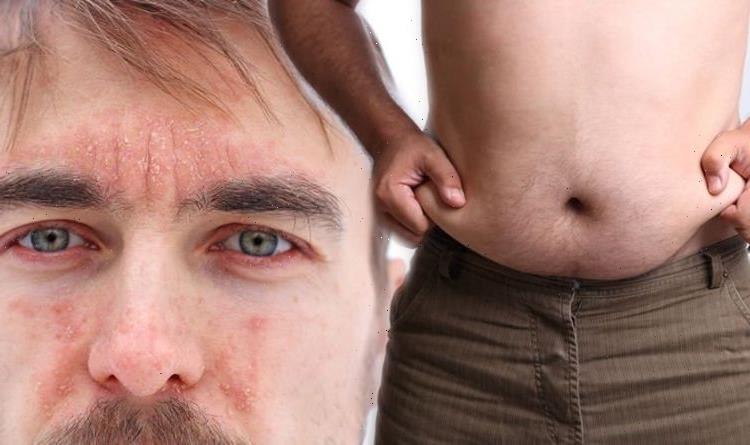Liver disease: NHS Doctor talks about link with alcohol
We use your sign-up to provide content in ways you’ve consented to and to improve our understanding of you. This may include adverts from us and 3rd parties based on our understanding. You can unsubscribe at any time. More info
Alcohol is a toxin, and it’s your liver’s job to flush this out of the body – however, it might not be able to keep up if you drink too much, too fast. Alcohol also causes fat to accumulate in the liver, with over drinking eventually causing the liver to scar, which can lead to inflammation, as well as cirrhosis, fatty liver disease, and liver cancer. With the festive season well and truly upon us, it’s easy to throw caution to the wind and drink far more than usual but what are five symptoms warning your drinking is becoming binge drinking?
According to the experts the five signs your drinking is becoming binge drinking affecting your health include:
Bruising Easily
Numbness or tingling
Changes in skin – rashes/redness/yellowing of the skin
Bacterial infections –thrush/bacterial vaginosis/yeast
Joint aches and pains.

Dr Shree Datta, consultant gynaecologist at The Lister Hospital (part of HCA UK) discussed how binge drinking increases the risk of bacterial infections.
When asked why a condition such as a yeast infection occurs from binge drinking, Dr Datta answered: “Yeast infections are caused by an overgrowth of yeast-like fungus called candida albicans – which happens when the vagina’s pH balance is disrupted.
“There are many causes of yeast infections including wearing tight clothing, wiping from back to front and using scented cleaning products around your genitals.
“Consuming food or drinks that contain high levels of yeast or sugar – such as beer and wine – can also increase your chances of developing yeast infections, especially if you are already prone to them.
“Binge drinking can also weaken our immune systems, which in turn, make it harder to get rid of yeast infections, such as thrush, when they do appear.”
When asked why a person’s skin colour changes when over drinking, Dr Angela Tewari, consultant dermatologist at The Lister Hospital (part of HCA UK) answered: One of the earliest signs of alcohol intoxication, whether this is an immediate effect or with persistent use is facial redness.
“Alcohol affects the blood vessel control leading to enlarged blood vessels which we will see facial redness.
“If you look closely there will be enlarged blood vessels on the skin known as telangiectasia.
“This is thought to be due to lack of production of certain proteins by the liver (as the liver gets damaged by the alcohol) resulting in altered hormone profiles in the blood.
“You can also get a transient flushing (redness) of the skin which we see because one of the main breakdown products of alcohol, known as acetaldehyde, stimulates histamine which is the same type of reaction you can get if you are allergic to certain foods.”

When asked about the long-term effects alcohol abuse has on one’s skin, Dr Tewari answered: “Well, this includes yellowing of the skin (jaundice) and also red hands (palmar erythema) due to a lack of certain liver proteins.
“This is all treatable and if you get any of this it often means you need to reduce your alcohol consumption.
“All in moderation we say.
“Try and limit drinking to one or two glasses at a time when socialising, and drink lots of water as this will help your skin over this period.”
According to the NHS, to keep health risks from alcohol to a low level:
Men and women are advised not to drink more than 14 units a week on a regular basis
Spread your drinking over three or more days if you regularly drink as much as 14 units a week
If you want to cut down, try to have several drink-free days each week
The health body added: “14 units is equivalent to six pints of average-strength beer or 10 small glasses of low-strength wine.”
Source: Read Full Article
